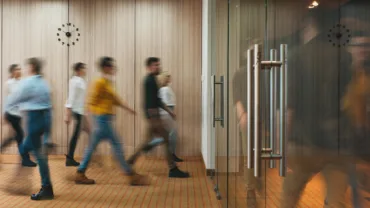As the legal industry reacts to evolving client expectations, change is inevitable. More companies are relying on in-house teams to manage their legal issues. How well these teams interact with the company at large and how well team members align with the company’s values are important considerations. Equally important is how well the team itself can meet challenges and solve problems.
Have you wondered exactly how your law firm needs to adapt to remain competitive and capitalize on new trends?
Kirsten Maslen, Director of Market Development at Thomson Reuters, recently spoke with Dan Kayne, General Counsel for the Routes team at Network Rail, and Helen Lowe, Head of Legal Operations at easyJet, for a discussion about how these new expectations are driving change in U.S. law firm behaviors.
Defining the “O Shaped Lawyer”
Traditionally, the legal profession has produced individuals with deep technological knowledge. As Dan Kayne puts it, law schools aren’t “teaching students to be practicing lawyers in the real professional world.” Instead, they are “teaching them what the law is and then off you go and try and apply it.”
This “T-shaped professional” is high in “technical competence” but has a lack of breadth in other valuable skills that would allow them to thrive in a real-world setting.
According to Kayne, these valuable skills are the “five Os” that constitute an “O Shaped Lawyer:”
- Be open — Adopting a growth mindset means being open to new perspectives and ideas.
- Take ownership — The focus should be on how your decisions affect business-driven outcomes, not just on legal expertise.
- Be original — Innovation, creativity, and forward-thinking are paramount to problem-solving.
- Be optimistic — An O Shaped Lawyer should think of ways to expand business rather than come up with risk-averse solutions that hamper expansion and opportunities.
- Take opportunities — Lawyers need to look broadly rather than sticking to their traditional spheres of influence.
O Shaped Lawyers are people first, lawyers second. They aren’t afraid to challenge the status quo and can work together collaboratively. Rather than having a team of specialists siloed in their area of expertise, this model calls for a team approach.
A “coaching culture” drives behavioral change
Helen Lowe points out that lawyers aren’t trained to have a “coaching culture” where “you are developing people, you are growing people, even though you are still a trainee yourself.” She sees this as a fundamental difference between the legal profession and other professions employed in-house by companies — accountants, for instance.
Why does it matter? A coaching culture trains professionals to be collaborative. It facilitates the free exchange of ideas among lawyers at different levels. It also promotes critical thinking and emotional intelligence. When lawyers are willing to be coached — and to share the information they’ve learned with others — it facilitates the growth of new ideas, ones that are truly collaborative.
Companies aren’t looking for a corporate lawyer to join the team because they need someone to do corporate deals, Lowe points out. Instead, they are “looking at someone who is going to partner the business, bring the legal expertise, but bring a really powerful commercial lens because they’re taken the time to get under the skin of the business.”
Evidence of an O Shaped Lawyer in the interview process
Say you want to compile a team of O Shaped Lawyers. How does a recruiter look for evidence of the five Os?
Lowe says that the entire interview process changes when you are looking for collaborative, open, and innovative lawyers for your in-house team. The focus is not on detailed responses to an RFP or the demonstration of knowledge in key practice areas.
Instead, the business simulation Lowe gave prospective legal teams had nothing to do with the law — something many of the law firms she approached found troubling. The exercise was to imagine themselves stranded in the Himalayas with only a few items and challenges that stood in the way of their making it off the mountain alive.
The purpose of this challenge was to force lawyers to abandon their technical silos and come together to solve a problem they had no particular experience with. Lowe observed how the team engaged to solve these challenges, not whether they were successful. Wit, creativity, innovation, a spirit of bonhomie — these were key indicators that a team had the potential to be O Shaped Lawyers.
How will your law firm drive change?
Change is never easy. But one thing is clear — one of the key factors driving change is a willingness to collaborate with other lawyers in the firm, regardless of rank.
With HighQ, your firm will be positioned to drive the client-focused changes necessary for growth.













